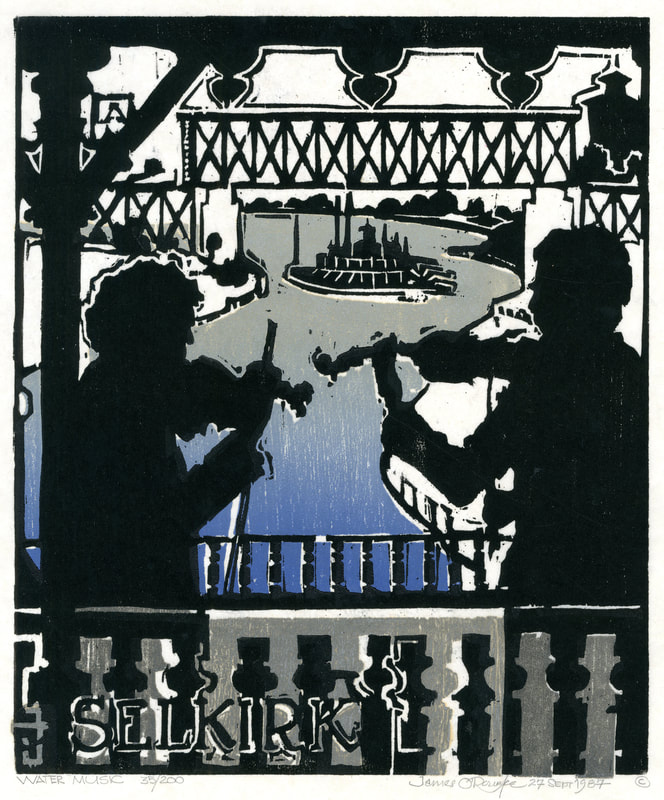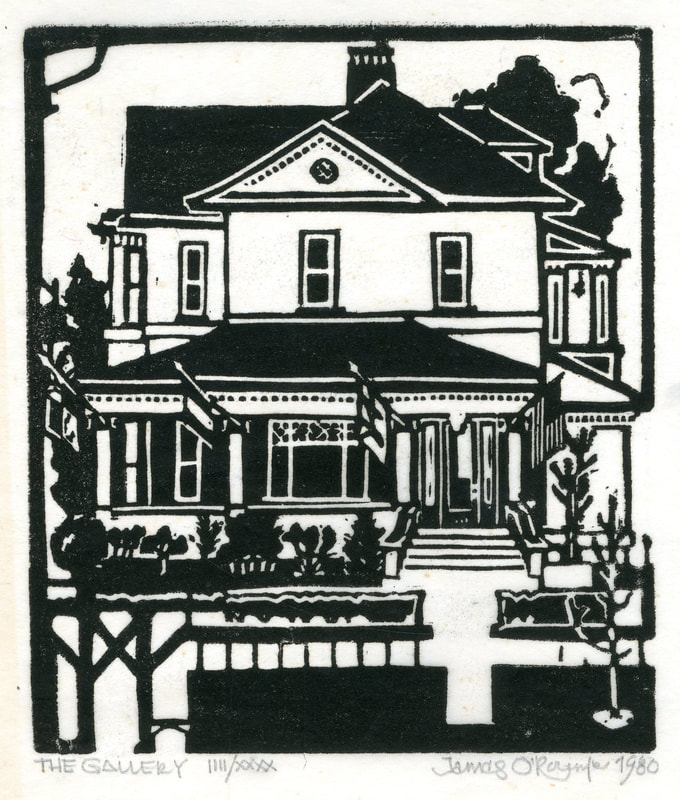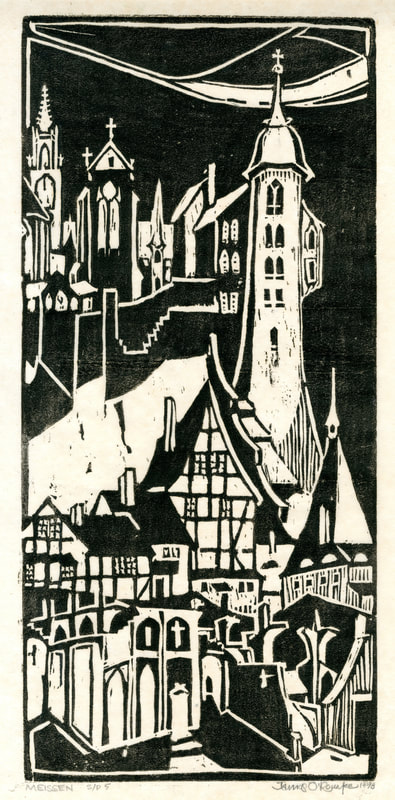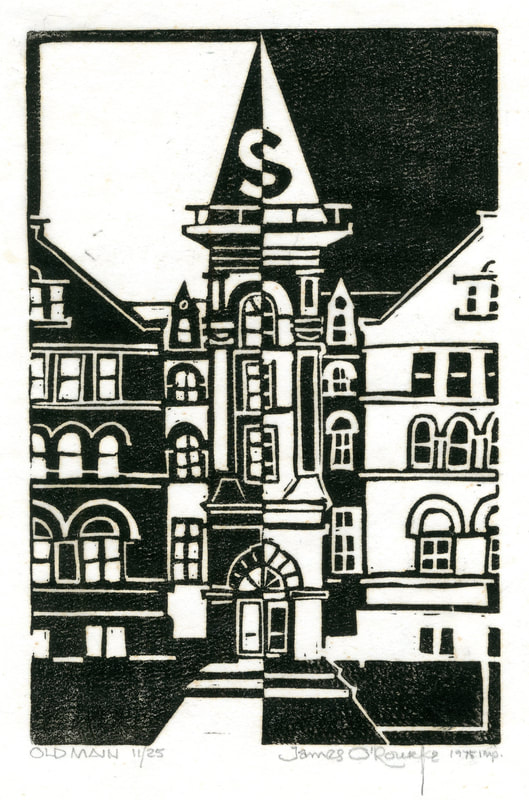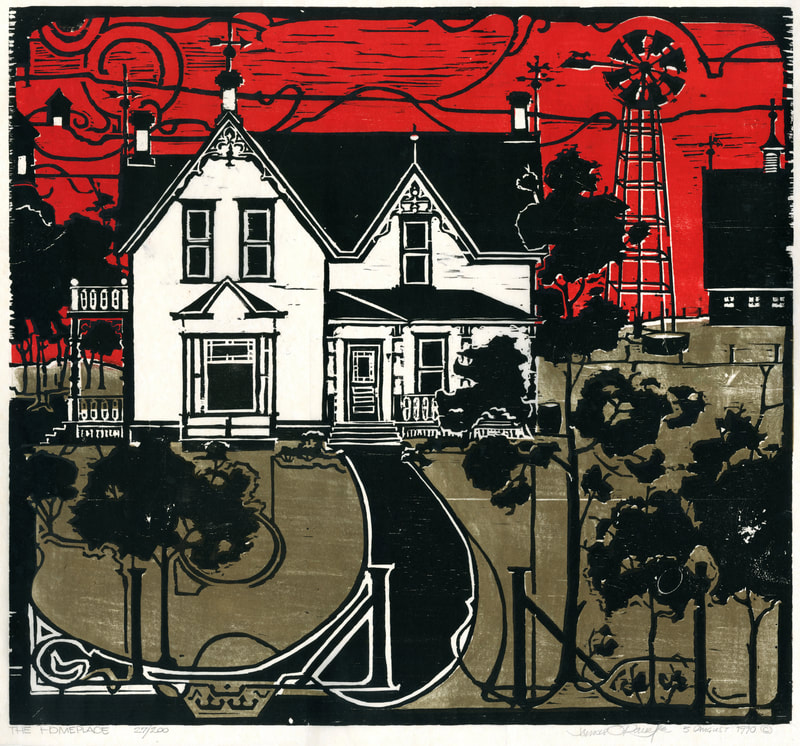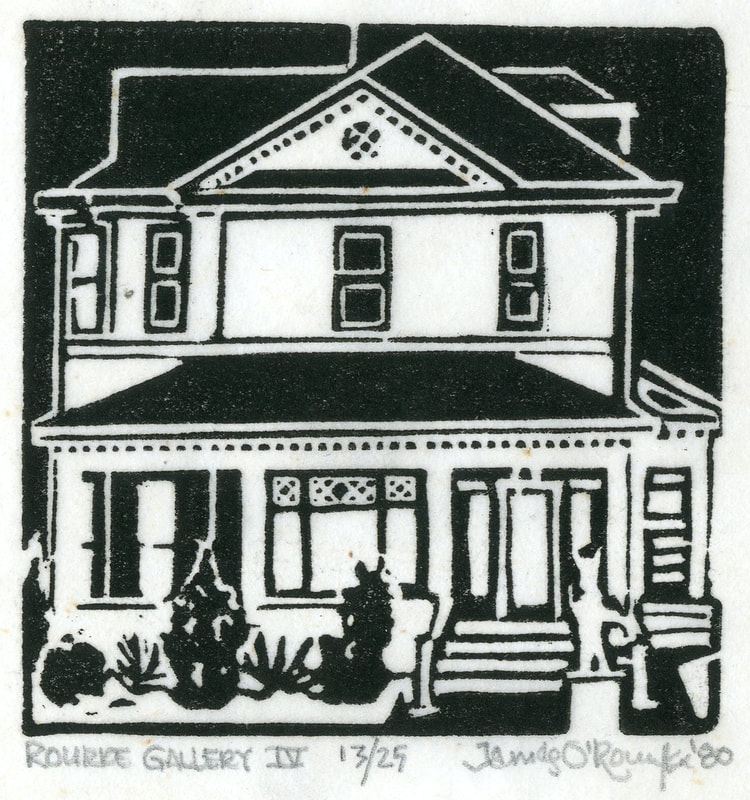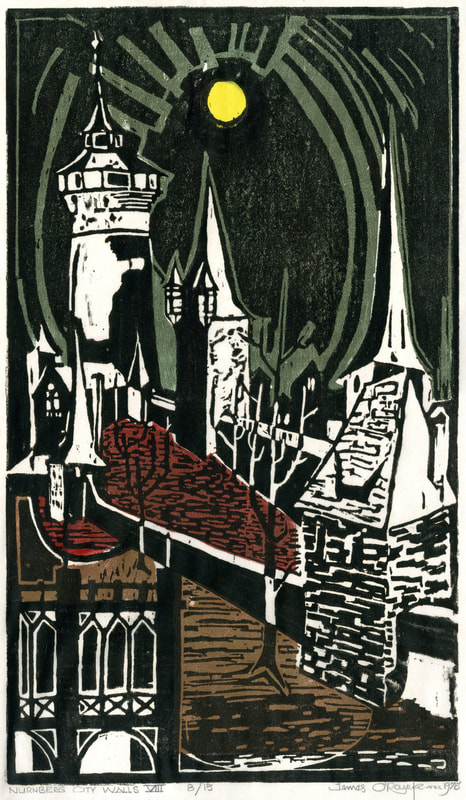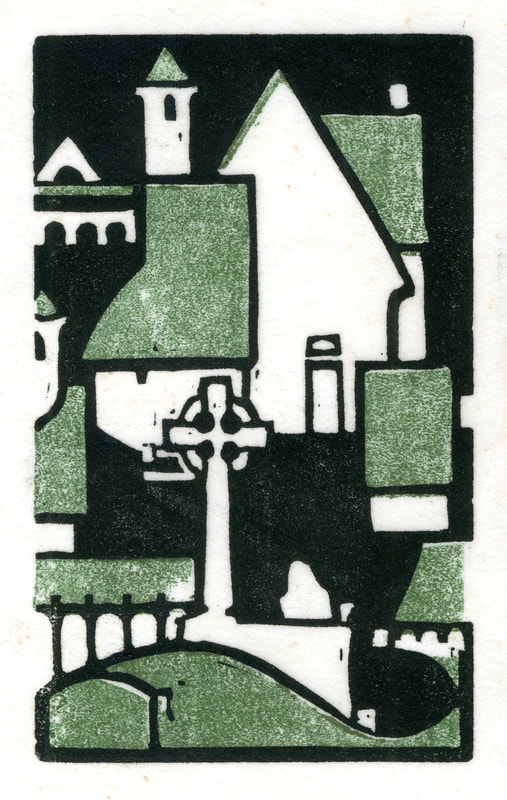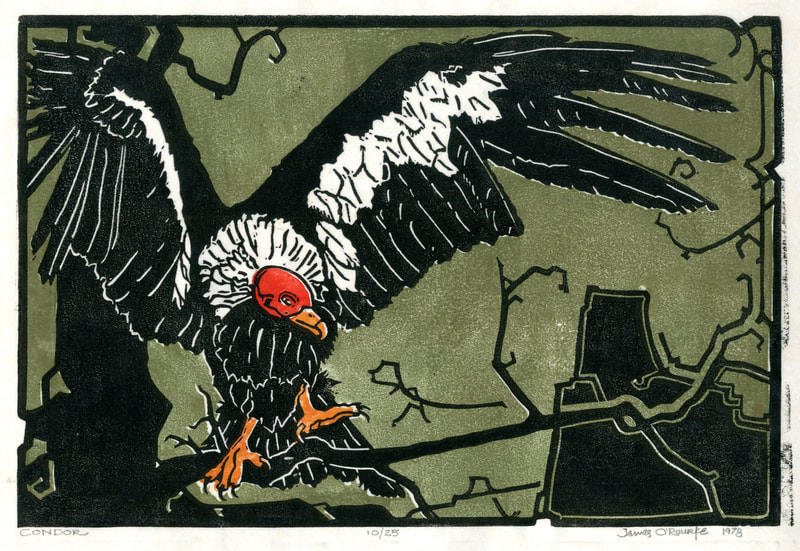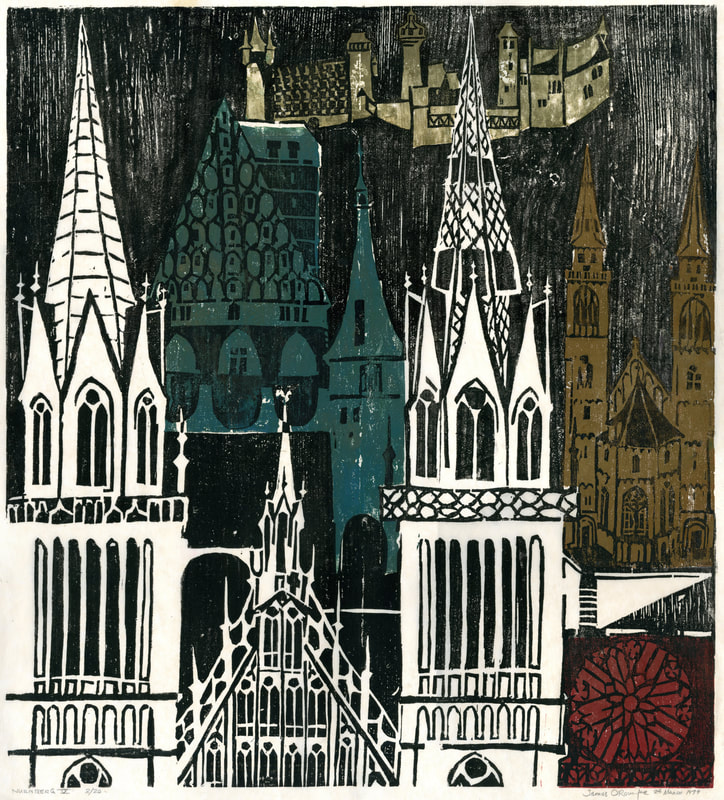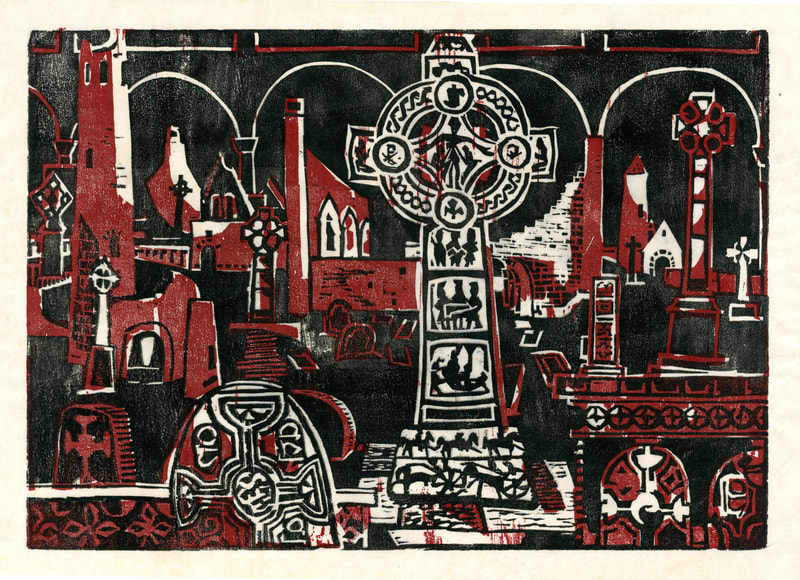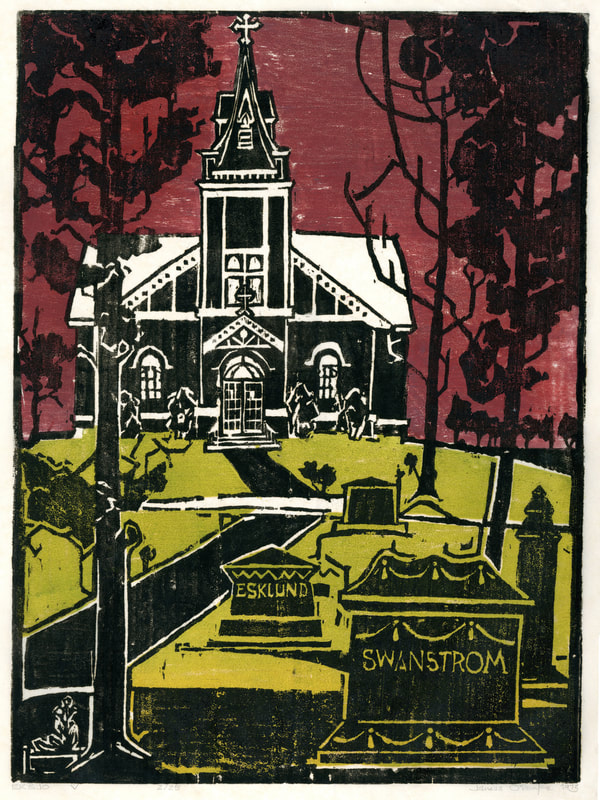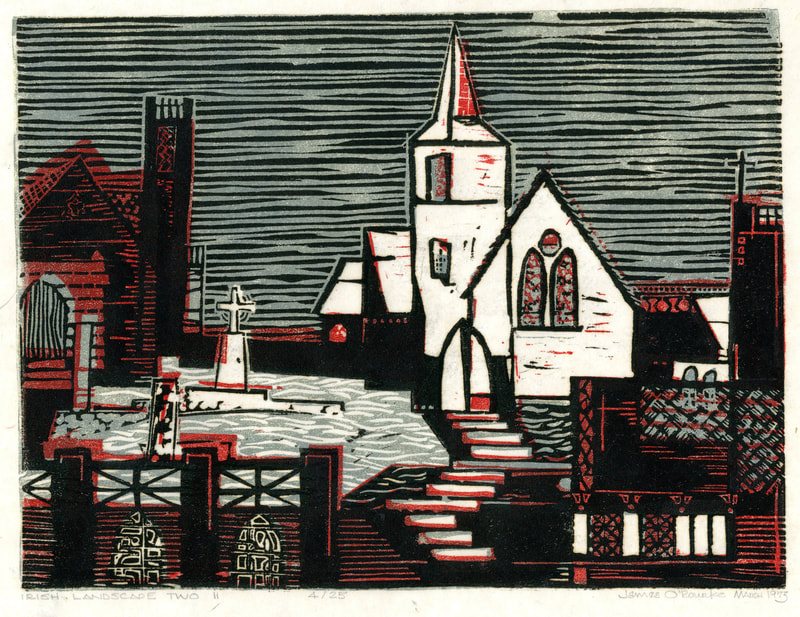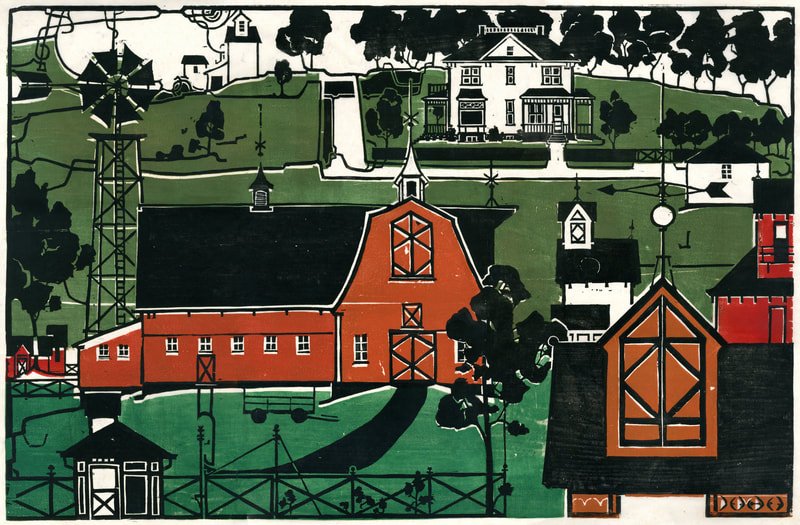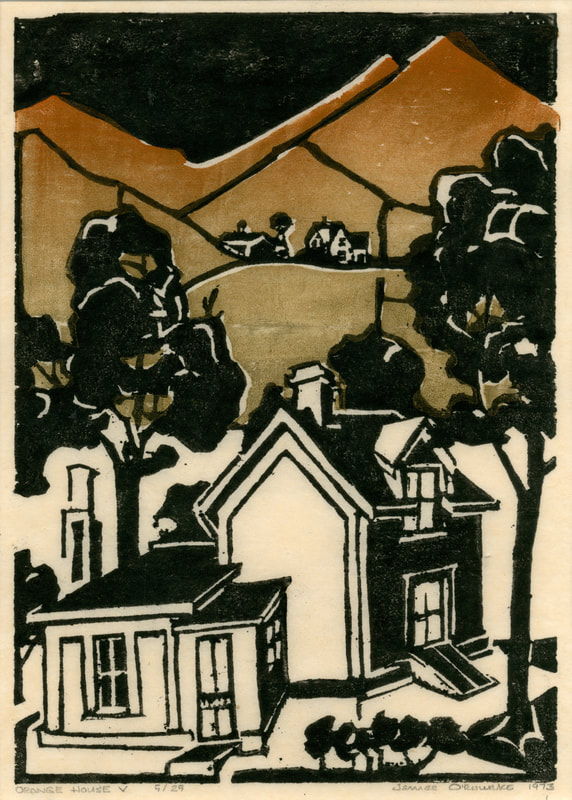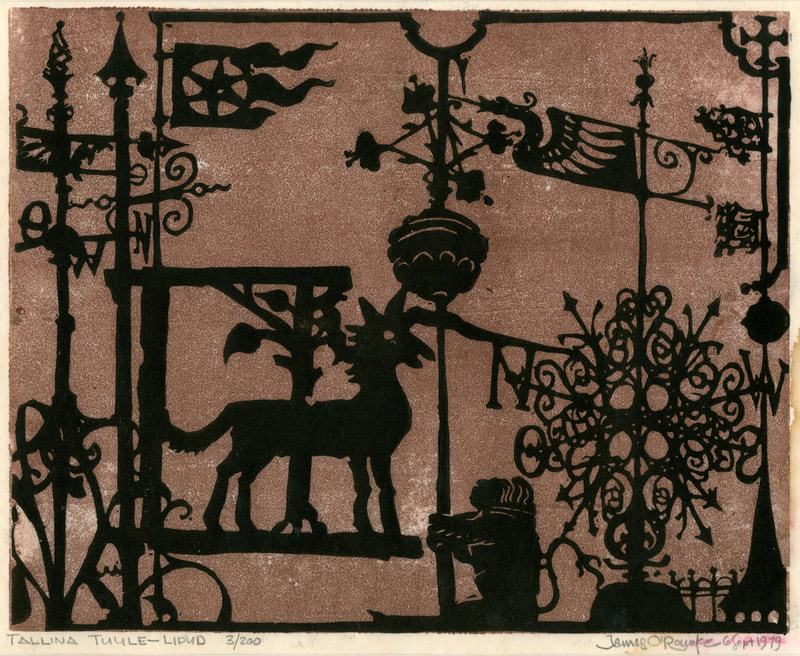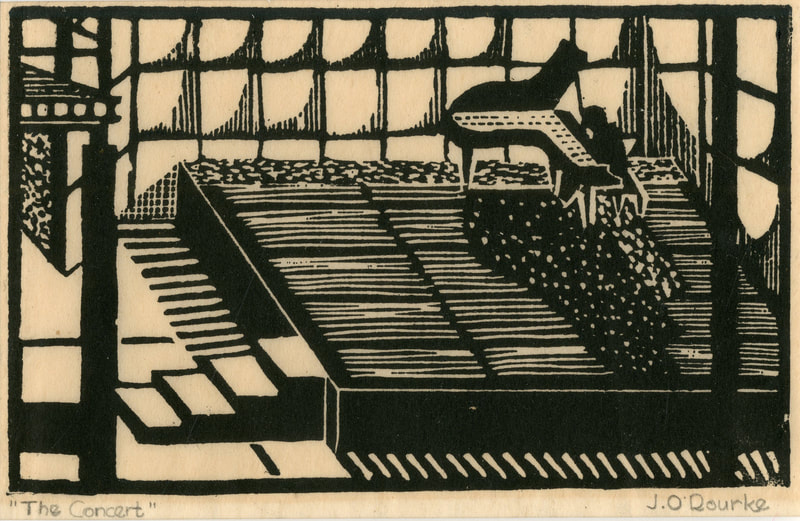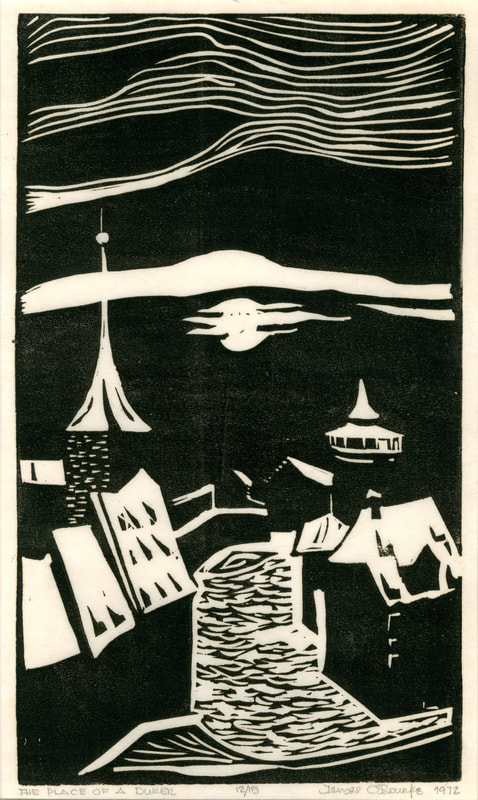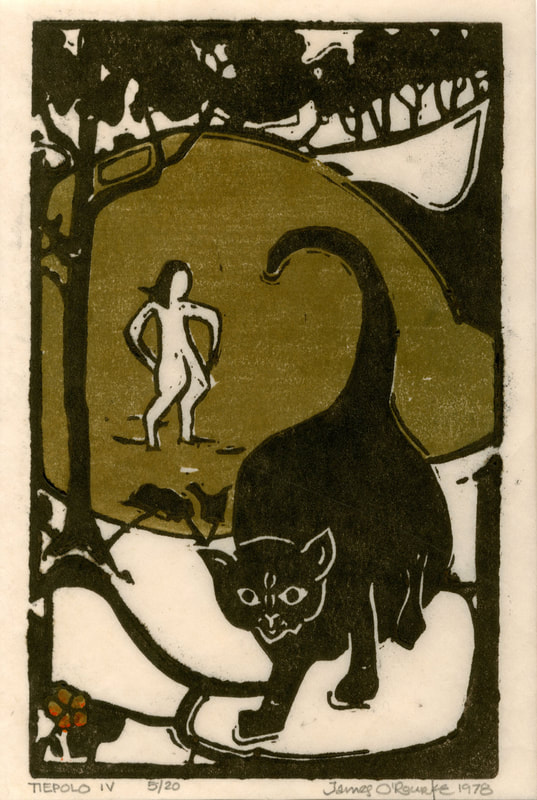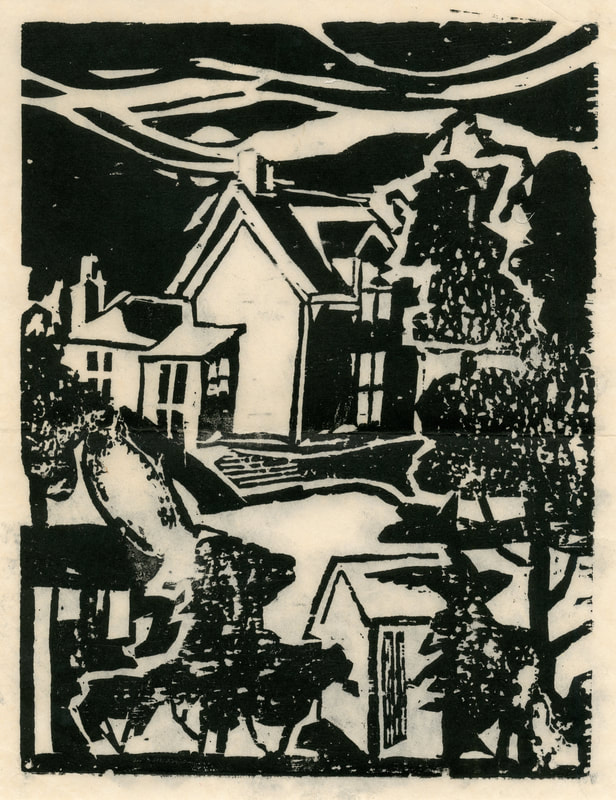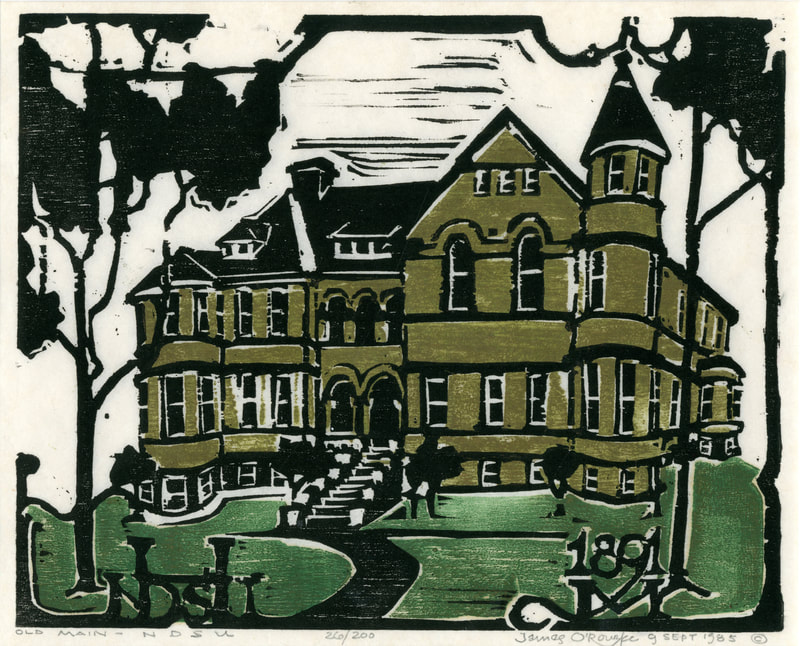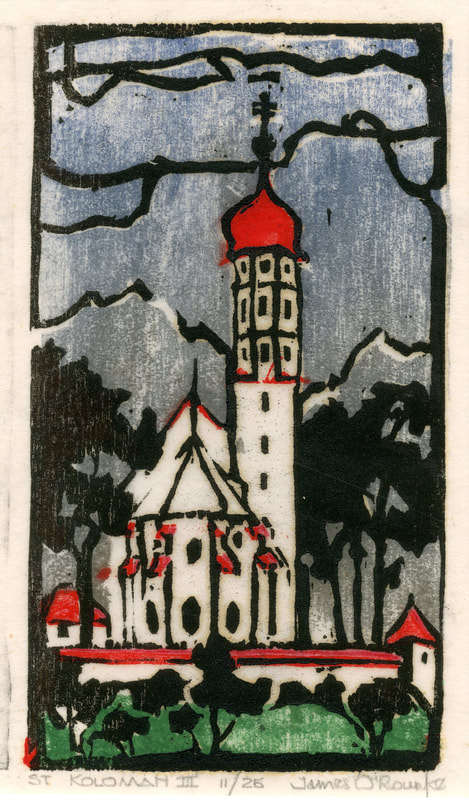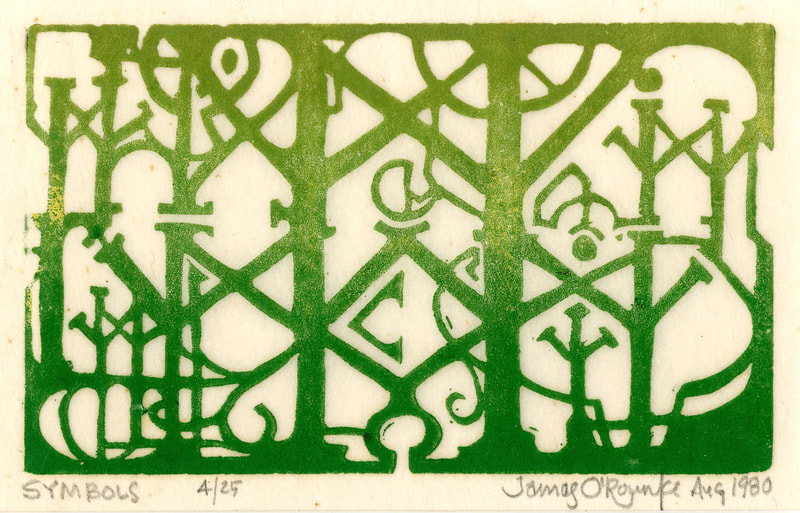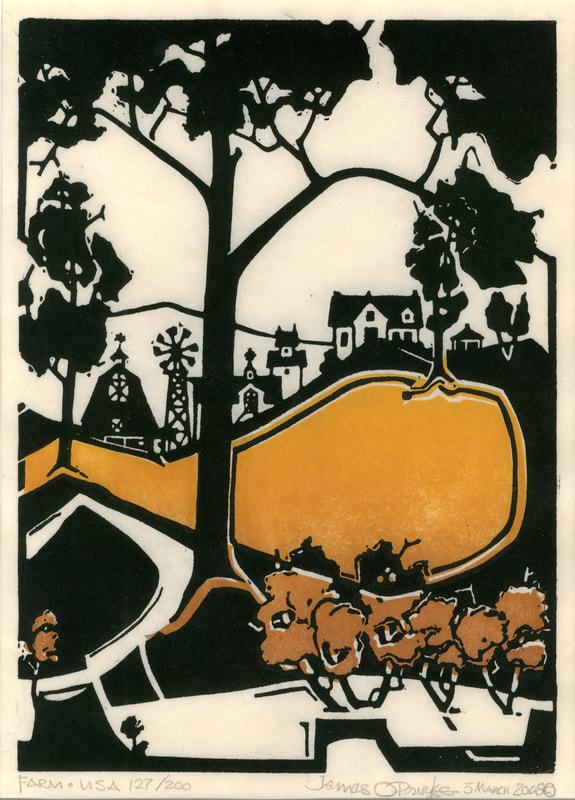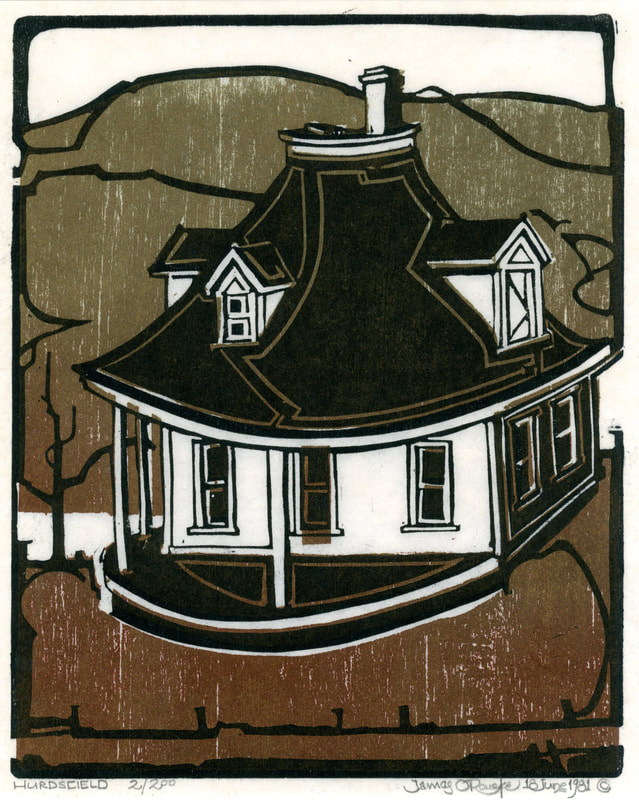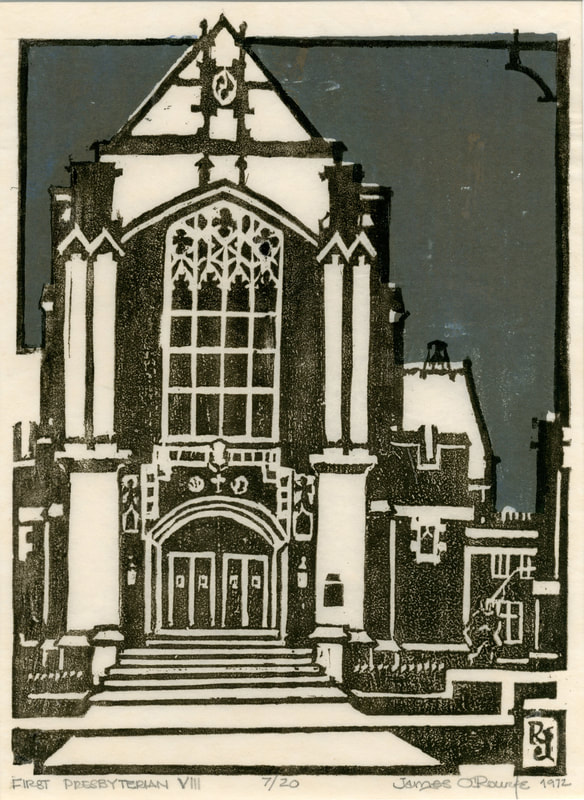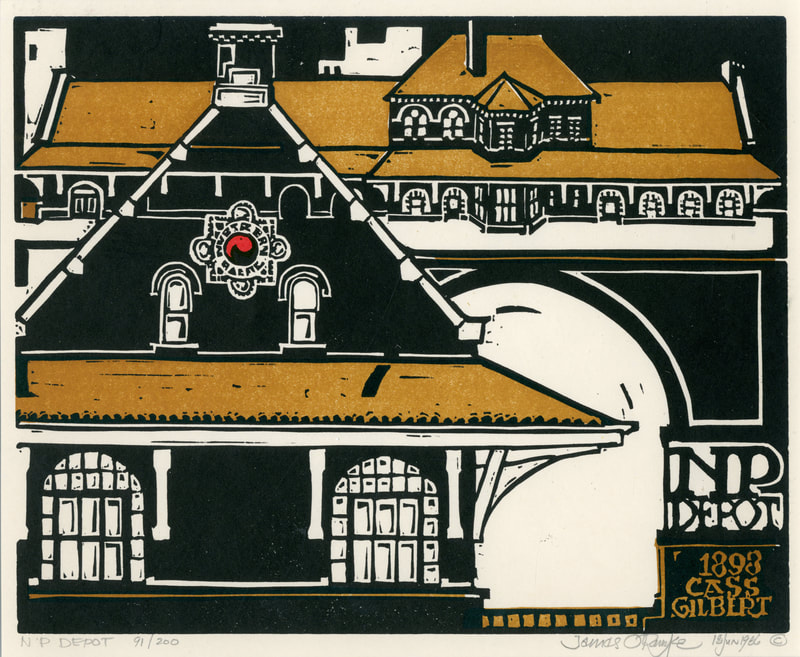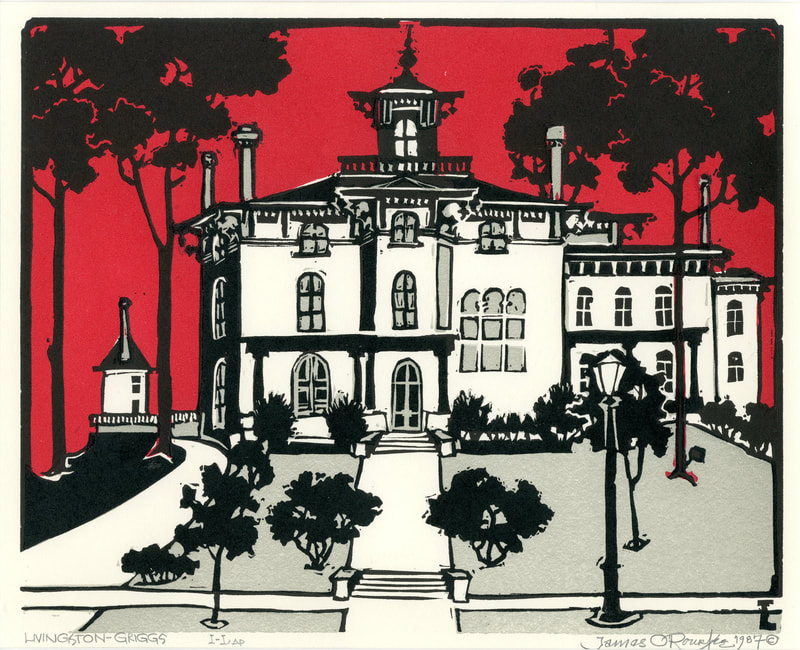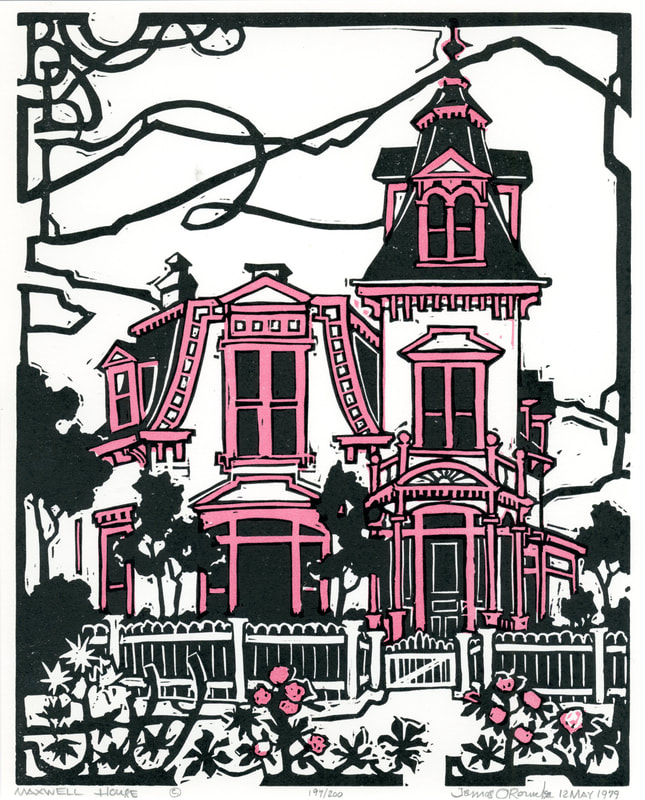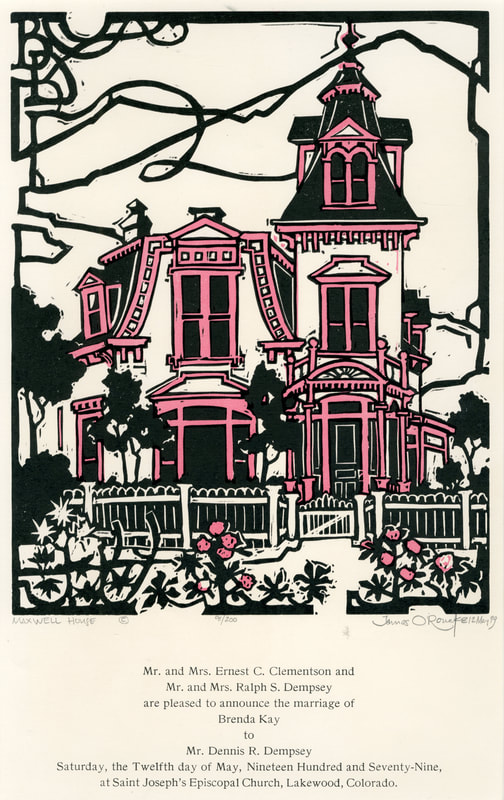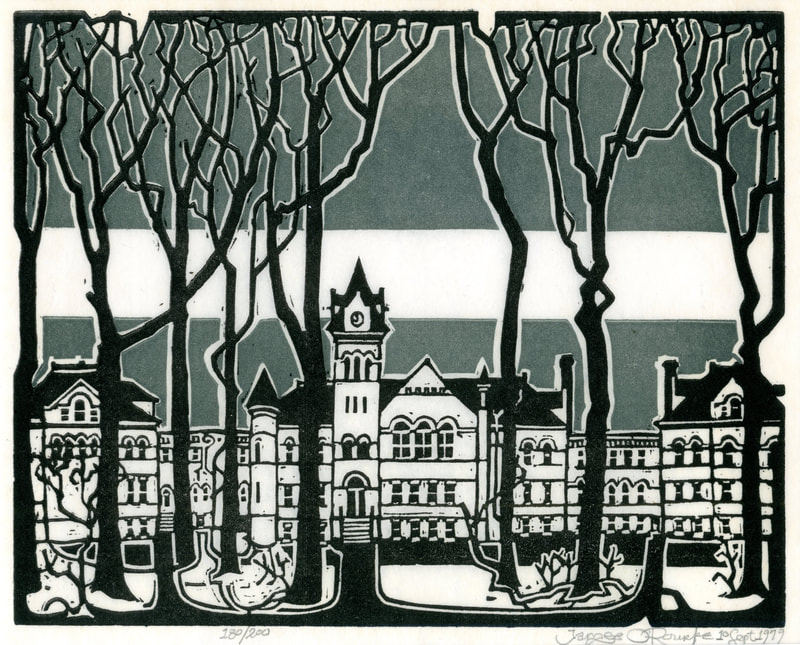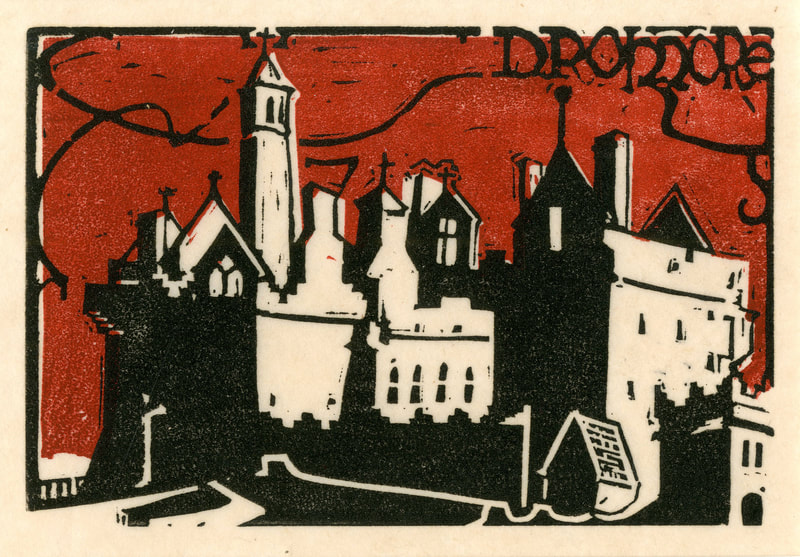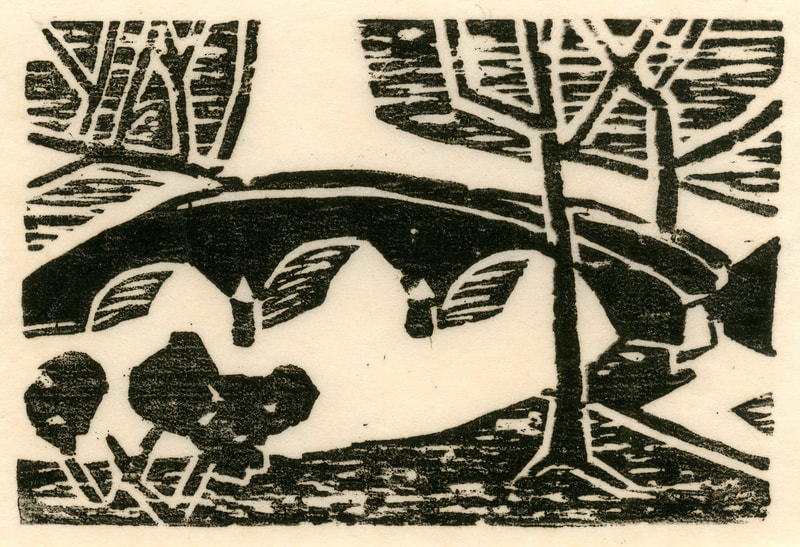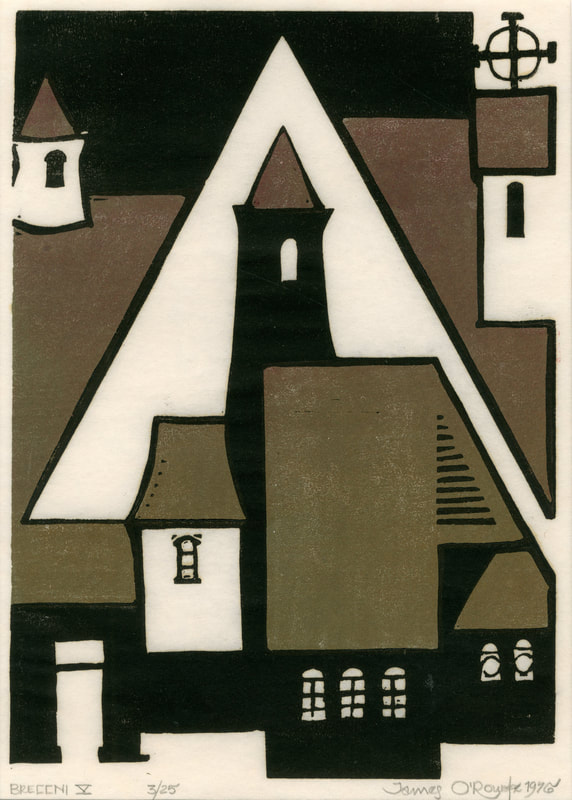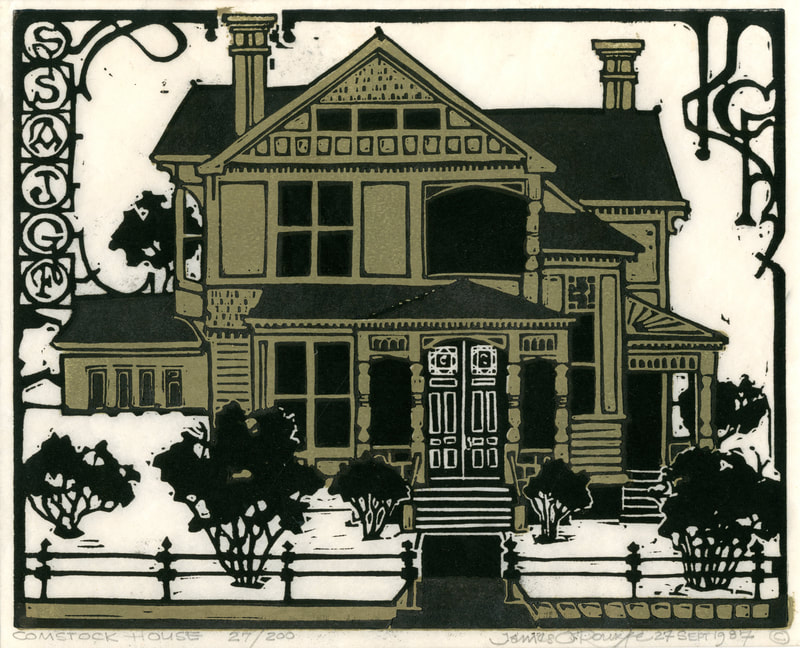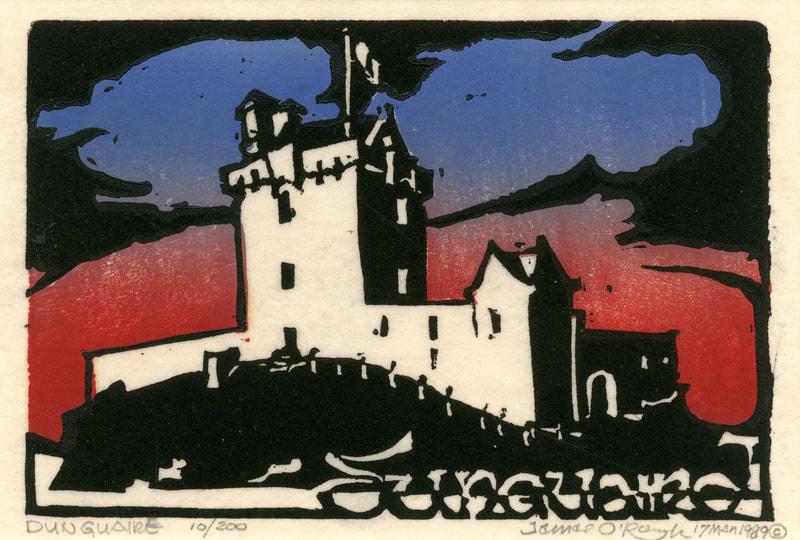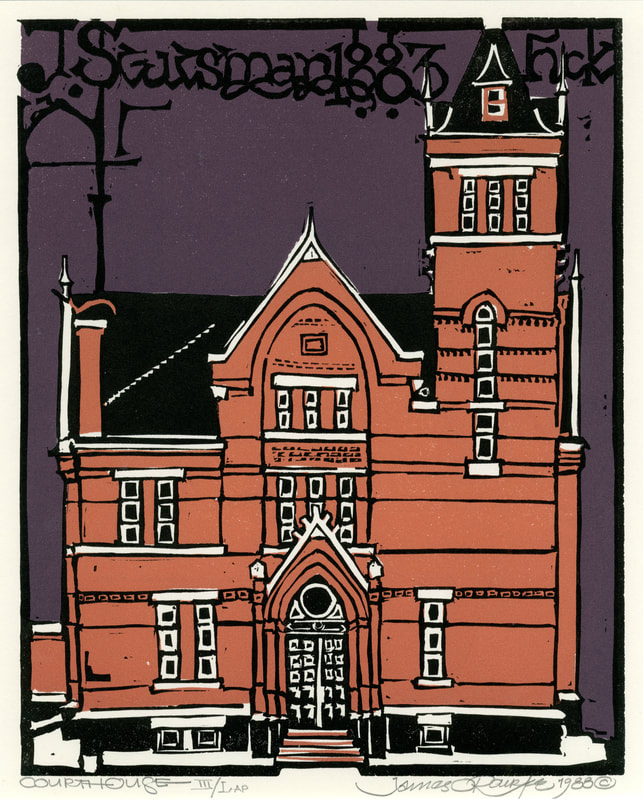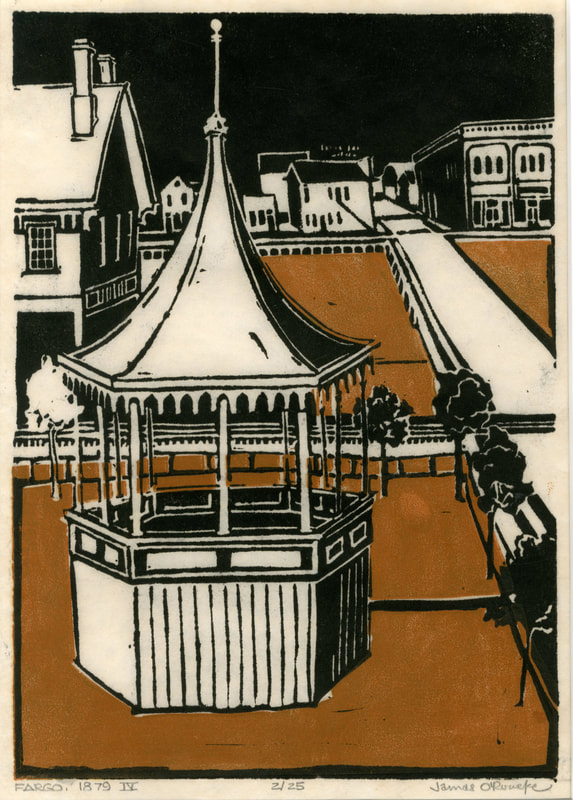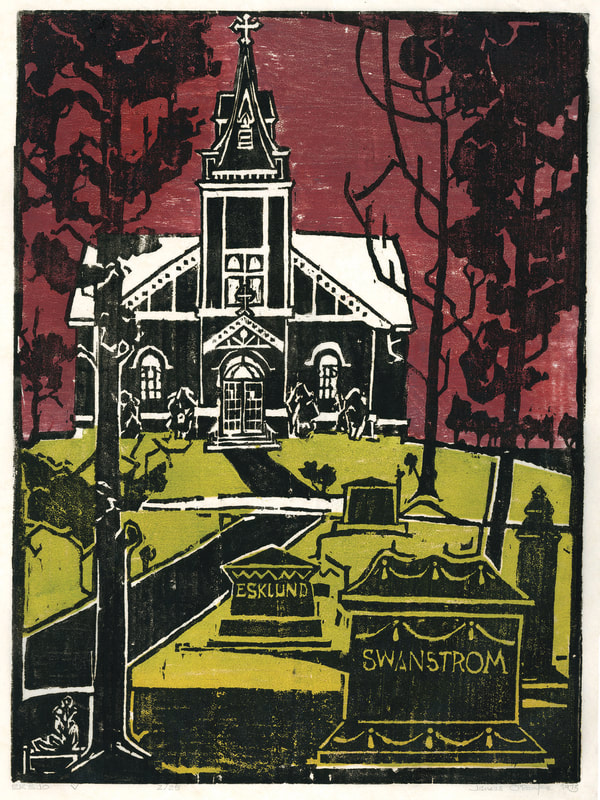The Complete Relief Prints of James Tiernan O’Rourke
|
James Tiernan O’Rourke was born in Langdon, North Dakota in 1933 to Joseph Rourke and Mildred (Gustafson) Rourke. He grew up in the farm country of northeastern North Dakota with his older brother Orland Rourke and younger brother Vern Rourke. His grandparents’ farms, his childhood schoolhouse, and a country church which was built by his family would provide some of the subjects for his paintings and prints.
James studied art and history at Concordia College in Moorhead with Cyrus M. Running and Elizabeth Strand from 1952 to 1956. His classmates at Concordia included Joy and Philip Thompson, Kathleen Ristinen, Abner Jonas, and LeRoy Aasland. In the summers of 1954 and 1956, he also took classes at the University of Idaho and the University of Colorado respectively. After college, James joined the United States Army and was stationed at Fort Meade in Maryland and later at Nuremberg in what was then West Germany. His three years of service afforded him the opportunity to travel and study art and architecture on the east coast and in Europe. The gothic architecture of Germany, Celtic crosses and castles of Ireland, and stave churches and fjords of Norway are all to be found in his later artwork. His experience abroad also helped to convince James of the need for an art gallery in Fargo-Moorhead—although, in his earliest conception, it had been as a book store which also sold art. When he returned to Moorhead in 1960, James established the Rourke Gallery with his brother Orland in the former Moorhead Daily News building. James worked as the active partner in this first gallery while Orland taught at McKinley Elementary School in Fargo. The fledgling Rourke Gallery relocated to a second commercial space briefly and then to the historic Martinson House in 1961 with James residing in a small living quarters on the second floor. Younger artists and art students would work at the gallery and take classes including James VerDoorn, Terence Larson, George Pfeifer, and Charles Thysell. Shortly after after The Rourke opened in the Martinson House, the Moorhead City Council moved to shutter the gallery because some held that it was operating as a commercial venture in a residential zone. But when council members received a barrage of protests over this decision, they determined to permit the gallery to remain in the neighborhood with the understanding that it could be considered a school because of the art classes it offered and thus be allowed without a zoning variance. The Rourke was confronted by other challenges in these early years, many of them financial in nature. On different occasions, James would consider moving away to start a new gallery in Minneapolis or San Francisco but, as fate would have it, he remained in Moorhead running an art gallery in the Martinson House for the rest of his life. To supplement his income at the gallery through the 1960s, James taught studio art and art history classes at the State School of Science in Wahpeton, North Dakota, Moorhead State College, and North Dakota State University in Fargo. He also briefly led an artists colony at Fort Ransom, North Dakota. James was involved in the establishment of the Red River Arts Center in 1965 and the O’Rourke Art Gallery Museum in 1973—which merged in 1975 to form the Plains Art Museum with James as executive director. During this period, he purchased the historic Franklin Sharp House in Moorhead to serve as his residence and studio. He parted company with the Plains in 1987, retaining Rourke Gallery in the Martinson House. In 1992, the non-profit Rourke Art Gallery + Museum was established. Throughout all of his time as a gallerist, teacher, museum director, and arts leader, James never stopped making art: paintings, prints, drawings, wood assemblages, photographs, and ceramics. Much like the sites he had visited in Europe during his Army years, the history of this region and its historic architecture were major sources of inspiration for his artwork. James would often say that he simply loved art, artists, and art patrons (in that order.) His interests outside of art were great dinners, dry martinis, historic houses, and his beloved cats. James O’Rourke passed away after suffering a fall in his home in early 2011. The Rourke Art Gallery + Museum was the benefactor of his estate, including his eclectic and impressive art collection and James’ remaining inventory of his own relief prints. |



